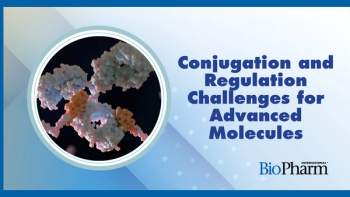
Greater Than the Sum of Its Parts: The Cellares Cell Shuttle
Cellares CEO Fabian Gerlinghaus explores advancements in counterflow centrifugal elutriation and electroporation, teasing exciting developments in product testing.
Editor's note: this story was originally published in
Establishing uniform workflows for system components and procedural stages poses a dual challenge and objective in the scaling up and commercialization of cell and gene therapies (CGT). Counterflow centrifugal elutriation serves as a method for enriching white blood cells and eliminating platelets. In addition, Cellares is using this technology for concentration steps and buffer exchanges. Gerlinghaus believes the key to appreciating the importance of their counterflow centralfugal elutriation feature is that it is but one of many technologies integrated into a fully-closed, fully-automated cartridge. The sum of all of those technologies put together in a closed and automated system is much more valuable than the sum of the parts; the whole system is worth more than the value of the individual technologies. Simply, automation solves the cost problem and closing the process solves the contamination problem. All of these technologies in and of themselves had to be at a similar efficacy level as technologies used in the current market, so Cellares generated a data set to show that that is the case. Gerlinghaus pointed out that in many cases, Cellares’ implementation of these technologies actually outperforms what's out there in the market; its electroporator achieves higher electroporation efficiency than many of the top electroporators used by professionals in the field. This can be seen as an underappreciated strength of Cellares’ technology platform.
Analytically speaking, it’s important to understand that the cell shuttle system handles purely the manufacturing of a cell type product; it does not handle release testing of the cell therapy products that come out of the platform. Gerlinghaus hinted, however, that there's a much bigger story coming soon. During the actual manufacturing process that is conducted on the cell shuttle, Cellares’ team does a lot of in-process testing. Cellares has integrated a fully automated biochemistry analyzer that can run up to 16 different assays on a tiny sample. It provides cell count, density, viability, and metabolite and nutrient data and it's fully integrated fluidically, mechanically, and from a software perspective. Gerlinghaus outlined the cell shuttle process: technicians decide ahead of time at which frequency they want the cell shuttle to take a sample and which assays they want that platform to run on the cell shuttle. Then, with the support of offline assays, the cell shuttle can take a sample, a human can pick it up, and the sample can be analyzed on any other third-party instrument. In future iterations of the cell shuttle, Cellares plans to go through an entire design-build test cycle roughly every year and a half. Moving forward, the company aims to integrate even more in-process analytical capabilities into the cell shuttle, promising that there is yet more to come.
Newsletter
Stay at the forefront of biopharmaceutical innovation—subscribe to BioPharm International for expert insights on drug development, manufacturing, compliance, and more.




